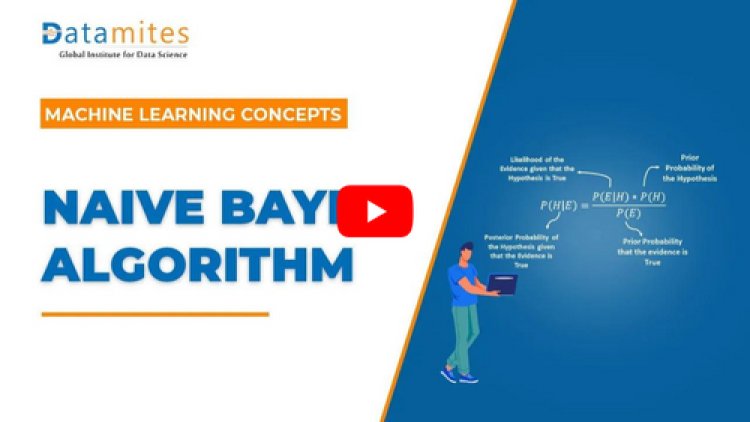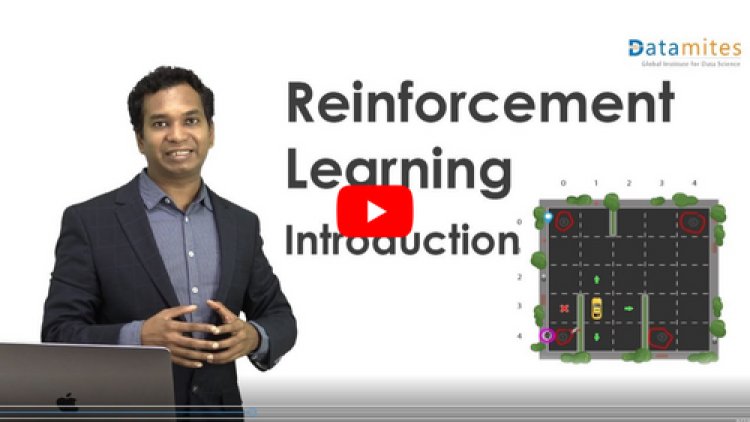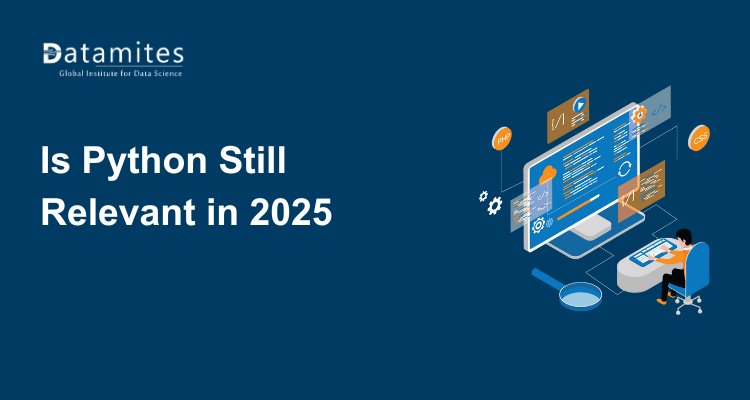A Complete Guide to Naive Bayes Algorithm in Python

Naive Bayes is a classification algorithm for binary class and multiclass classification problems. Naive Bayes is applied on each row and column. It is used for text classification.
What is Probability?
The chance of something happening is called ‘probability.’Probability = No. of outcome / Total No. of outcome
- Flipping a Coin(H,T) = ½ — Independent Event
Rolling a Dice,P(5) = ⅙ — Independent Event
Let’s take both events
P(H,5)= P(H) * P(5) —Joint Event - Event A = Taking a blue marble
P(B)=⅗
Event B= Taking Second blue marble
P(2B)=2/4 = ½ P(getting 2nd blue marble / when already 1st blue marble has been taken out)=½
Event A and B are dependent events, hence we will use Conditional Probability.
General Formula
Let’s look at an example :
Task: Based on weather conditions predict if the player will play or not.
Step 1: Make a Frequency table
FREQUENCY TABLE Step 2 : Create a Likelihood table
LIKELIHOOD TABLE The problem statement is whether the players would play if the weather is sunny.
P(Yes/Sunny) = P(Sunny/Yes) * P(Yes) / P(Sunny)
= 3/9 * 9/14 / 5/14
P ( No / Overcast ) = P ( Overcast / No ) * P ( No ) / P (Overcast)
=0/5 * 5/14 / 0/14
= 0
Naive Bayes Algorithm Explained

Feature Vector Creation
The feature vector is the method which converts text data into feature vectors. Feature vector creation can be done by
Bag of words
TFIDF
Bag of words
Step1: Tokenization ( Removing Stopwords)
TOKENIZATION
Sentence 1: He is a good boy. — good boy
Sentence 2: She is a good girl. — good girl
Sentence 3: Both are good boy and girl — good boy girlStep2: Feature vector creation ( unique tokens are getting features )
f1 f2 f3
Good boy girlSent1 1 1 0
Sent2 1 0 1
Sent3 1 1 1
TF-IDF
TF-IDF is short for Term Frequency Inverse Document Frequency
TF = ( No. of times the word repeated in sentence /
Total No. of words in a sentence)
IDF = log ( Total No. of sentence /
No.of sentences containing that word )Step1: Tokenization ( Removing Stopwords )
Sentence 1: — good boy
Sentence 2: — good girl
Sentence 3: — good boy good girlStep2: Creating TF table
Sent1 Sent2 Sent3
Good 1/2 1/2 1/3
Boy 1/2 0 1/3
Girl 0 1/2 1/3Step3: Creating IDF table
Good log( 3 / 3 ) = log(1) =0
Boy log ( 3 / 2 )
Girl log ( 3 / 2 )
Step4: Feature vector creation
Good Boy GirlSent1 1/2 * 0 1/2 * log( 3 / 2 ) 0
Sent2 1/2 * 0 0 1/2 * log( 3 / 2 )
Sent3 1/3 * 0 1/3 * log( 3 / 2 ) 1/3 * log( 3 / 2 )
3 Types of Naive Bayes in Scikit Learn
Gaussian
- It is used for classification problems and it assumes that features have a normal distribution.
Multinominal
- It is used for discrete counts.
Bernoulli
- It is used for binary counts(ie., Zeroes and One).
Pros of Naive Bayes
- Naive Bayes is a fast and highly scalable algorithm.
- Naive Bayes can be classified into both binary classification and multi-class classification. It has different types of Naive Bayes Algorithms like GaussianNB, MultinominalNB, and BernoulliNB.
- The algorithm is simple and depends on doing a bunch of counts.
- Best choice for text classification problems. Widely used in spam mail classification.
- Training on small datasets is easy.
Cons of Naive Bayes
- It cannot learn the relationship between features because it considers all the features to be unrelated.
Application of Naive Bayes
- Naive Bayes is broadly utilized for text classification.
- News article classification SPORTS, TECHNOLOGY etc.
- Spam or Ham: Naive Bayes is the most popularly used for mail filtering.
Python Implementation of Naive Bayes
- Importing the required libraries
- import pandas as pd
- from sklearn.model_selection import train_test_split
- from sklearn.feature_extraction.text import CountVectorizer,TfidfVectorizer
- from sklearn.naive_bayes import MultinomialNB
- from sklearn.metrics import accuracy_score
- import string
- import matplotlib.pyplot as plt
Refer to the following articles:
Why is Python an Interpreted Programming Language?
Scala vs Python for Apache Spark
Loading the dataset
data = pd.read_csv(“spam.tsv”,sep=’\t’,names=[‘Class’,’Message’])
data.head(8) # View the first 8 records of our dataset
Output:
The mails are categorized into 2 classes ie., spam and ham.
#Let’s see the count of each class
data.groupby(‘Class’).count()
Output:
Text PreProcessing
#Lets assign ham as 1
data.loc[data[‘Class’]==”ham”,”Class”] = 1
#Lets assign spam as 0
data.loc[data[‘Class’]==”spam”,”Class”] = 0
Removing punctuations
#the default list of punctuations
import string
String.punctuation
Output:
‘!”#$%&\'()*+,-./:;<=>?@[\]^_`{|}~’
#Let’s remove the punctuation
def remove_punct(text1):
text1 = “”.join([c for c in text if c not in string.punctuation])
return text1
data[‘text_clean’] = data[‘Message’].apply(lambda x: remove_punct(x))
data.head()
Output:
#Tokenization
#Countvectorizer is used to convert text to numerical data.
#Initialize the object for countvectorizer
CV = CountVectorizer(stop_words=”english”)
Splitting x and y
xSet = data[‘text_clean’].values
ySet = data[‘Class’].values
ySet
Splitting Train and Test Data
xSet_train,xSet_test,ySet_train,ySet_test = train_test_split(xSet,ySet,test_size=0.2,random_state=10)
xSet_train_CV = CV.fit_transform(xSet_train)
xSet_train_CV
Feature vectorizer
#text preprocessing and feature vectorizer
#To extract features from a document of words, we import TfidfVectorizer
from sklearn.feature_extraction.text import TfidfVectorizer
tf=TfidfVectorizer() ## object creation
X=tf.fit_transform(X) ## fitting and transforming the data into vectors
#Training the model
#Creating training and testing
from sklearn.model_selection import train_test_split
X_train,X_test,y_train,y_test=train_test_split(X,y,random_state=6)
#Model creation
from sklearn.naive_bayes import MultinomialNB
#model object creation
nb=MultinomialNB()
#fitting the model
nb.fit(X_train,y_train)
#Prediction
#getting the prediction
y_hat=nb.predict(X_test)
y_hat
#Evaluation
#Evaluating the model
from sklearn.metrics import classification_report,confusion_matrix
print(classification_report(y_test,y_hat))
SpamClassificationApplication
msg = input(“Enter Message: “) # to get the input message
msgInput = CV.transform([msg]) #
predict = NB.predict(msgInput)
if(predict[0]==0):
print(“————————MESSAGE-SENT-[CHECK-SPAM-FOLDER]—————————“)
else:
print(“—————————MESSAGE-SENT-[CHECK-INBOX]——————————“)
Output:
Being a prominent data science institute, DataMites provides specialised training in topics including deep learning, machine learning, artificial intelligence, the internet of things, and Python. Our Machine Learning Courses at DataMites have been authorised by the International Association for Business Analytics Certification (IABAC), a body with a strong reputation and high appreciation in the analytics field.
XGBOOST in Python (Hyper parameter tuning)

Reinforcement Learning in Python with Simple Example






